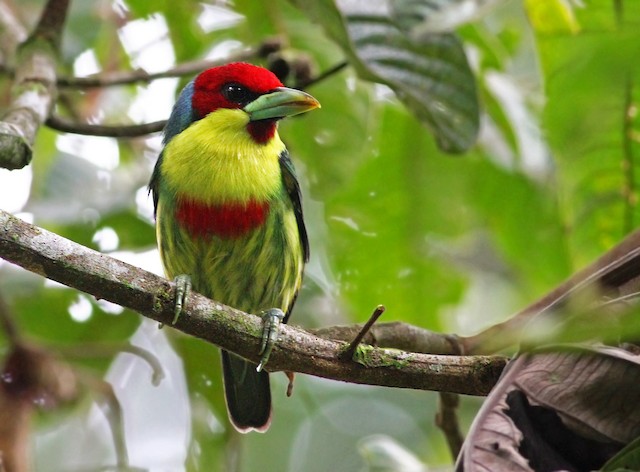Prepare to be dazzled by the vibrant and brightly bristled Versicolored Barbet (Eubucco versicolor), a remarkable bird belonging to the New World barbets in the Capitonidae family. This colorful species is a true spectacle, sporting a psychedelic array of colors and a conspicuous blue or yellow handlebar mustache!

The males of this species are particularly striking, with their red faces and crowns, complemented by green to blue-green upperparts. Their lower breast is adorned with vivid red, transitioning to yellowish bellies covered in green streaks. Meanwhile, the females display green to blue-green upperparts and feature yellowish bellies with similar green streaks.

The Versicolored Barbet is native to South America and can be found in Bolivia and Peru. As a non-migratory species, it thrives in submontane forests rich in epiphytes and moss, as well as mature secondary forested areas. These birds prefer altitudes ranging from 1,000 to 2,000 meters.

Feeding on a diet that consists of approximately 80% fruit and seeds, with the remainder being mostly arthropods, the Versicolored Barbet showcases its versatility as a forager. It skillfully pokes and tears through clusters of dead leaves to find its arthropod prey.

Despite their stunning appearance and intriguing behavior, little is known about the breeding process of this species, including information about different subspecies. One subspecies is known to breed between July and December, with a nesting observation revealing a tree hole containing three eggs.




The Versicolored Barbet is an avian wonder that enchants observers with its riot of colors and charismatic features. Its striking blue or yellow handlebar mustache adds a touch of whimsy to its already captivating appearance. As we marvel at the beauty of this species, let us strive to protect and preserve its habitat and contribute to the conservation of this magnificent bird and its ecosystem. By raising awareness and implementing conservation measures, we can ensure the Versicolored Barbet continues to grace the forests of South America for generations to come.



